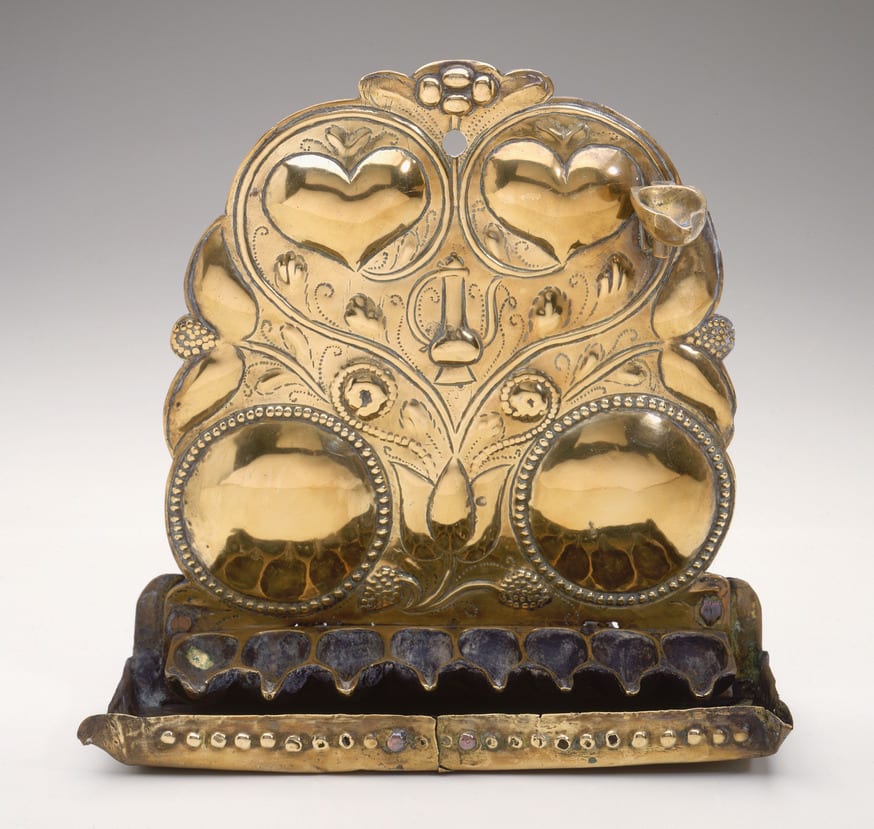
- Object Name:
- Hanukkah Lamp
- Place Made:
- Netherlands
- Date:
- 18th century
- Medium:
- Copper alloy: repoussé, traced, punched, and cast
- Dimensions:
- 10 1/8 × 10 3/16 × 4 1/4 in. (25.7 × 25.9 × 10.8 cm)
- Credit Line:
- Gift of Dr. Harry G. Friedman
- Accession Number:
- F 3553
Not On View
The decoration on this lamp and others like it is characterized by several large bosses or hearts in high relief, which form a marvelous reflective surface for the oil lights. These elements, as well as the absence of piercing on the backplate, make this group most similar to secular Dutch sconces.
Many have tulips at the bottom center and beaded buds. The tulip was extremely popular in Holland after it was introduced from Turkey in the sixteenth century. The mania for this flower grew so much that by the early seventeenth century people were speculating wildly on tulip stock and paying exorbitant amounts for bulbs. The ruin for many that followed caused the government to step in and regulate the trade, and tulips soon developed into a major Dutch industry. Tulip and bud decoration was common on Dutch and Dutch-imitation German sheet-brass secular articles from the first half of the eighteenth century. These comparative works help to date this group of Hanukkah lamps.
The ewer in the center of the backplate is, by contrast, a specifically Jewish symbol. It may be a reference to the miracle of the oil that occurred when the ancient Temple menorah was rekindled. Alternatively the pitcher could indicate that the owner of the lamp was a Levite, a descendant of the servitors of the Temple, as this is the symbol used by the Levites.
Many have tulips at the bottom center and beaded buds. The tulip was extremely popular in Holland after it was introduced from Turkey in the sixteenth century. The mania for this flower grew so much that by the early seventeenth century people were speculating wildly on tulip stock and paying exorbitant amounts for bulbs. The ruin for many that followed caused the government to step in and regulate the trade, and tulips soon developed into a major Dutch industry. Tulip and bud decoration was common on Dutch and Dutch-imitation German sheet-brass secular articles from the first half of the eighteenth century. These comparative works help to date this group of Hanukkah lamps.
The ewer in the center of the backplate is, by contrast, a specifically Jewish symbol. It may be a reference to the miracle of the oil that occurred when the ancient Temple menorah was rekindled. Alternatively the pitcher could indicate that the owner of the lamp was a Levite, a descendant of the servitors of the Temple, as this is the symbol used by the Levites.
Information may change as a result of ongoing research.